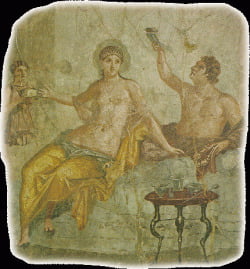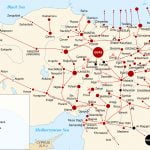Armenian New Year Traditions – New Year in Armenia
Prehistory of Armenian New Year

The ancient Armenians had been celebrating the coming of the New Year on the 21st of March. That date is also the birthday of the Armenian pagan God Vahagn. On this day the Armenians prepared huge feasts to welcome and celebrate the zenith of the nature.
During the 18th Century, January 1st was accepted as a beginning of the New Year. In spite of this change, Armenians in some regions of the country (Syunik, Artsakh and Utik) continued to celebrate New Year on Navasard (Navasard is a first month of Armenian chronology). Today almost all Armenians celebrate the New Year on January 1st.

Armenian New Year

The New Year celebration is one of the most loved holidays for Armenians all over the world.
Armenian Families do their best to save money for New Year table. People even do more than they can afford, since it’s believed that “You’ll spend the year just the way you’ve welcomed it” and also people will be welcoming guests the following days, so the table has to be as “rich” as possible.
The preparations start weeks before the New Year. People start attacking the food stores and supermarkets, trying to do the shopping beforehand, since the last days many things become more expensive (others like to leave everything till the last moment and the shop owners are earning on it).
Armenian New Year Table



One of the most important Armenian New Year table “accessories” is the pork leg (Khozi bud, Խոզի բուդ), but some families also use turkey, little pig or some fish.
Other traditional things for the table are meat snacks (ershik, basturma, sujukh etc), various salads (“mayraqaghaqayin, snkov, lobiov etc”, “olivier”, chicken breast with nuts or mushrooms and other), …

On the table you can find pastry (mostly eastern ones – with sweet honey syrup and nuts, since they can stay eatable longer because there’s no milk cream), fruits (orange, apples, pomegranate, bananas, grapefruits, Apples etc), various nuts (pistachio, hazelnuts, almonds, walnuts, etc…), and the sweet sudjukh – walnuts, threaded and soaked in thick syrup of grape or mulberry juice. Dried sweet snacks from all kinds of fruits (sometimes also vegetables) is also a must-have for the table.
Parts of the traditional New Year’s meal like various dried fruits, raisins, different kinds of nuts, gahin and others would have been previously prepared, but the pastries, cakes and harisan would have been prepared on the 30th of December.
One of the most important ant interesting traditions of Armenian new year is Darin (Gata). Darin is a big flat bread, which has a coin hidden in it. The person who found the piece with the coin in it was considered the ‘lucky’ member of the family for the New Year. But the most remarkable meal is the dolma, which is prepared with rice and grape leaves.
Armenian Christmas – January 6
Armenian Christmas is being celebrated on Jan. 6. On the eve, people usually go to the church and bring consecrated fire from there to clean their house from dark spirits. On the Christmas day families gather to eat rice (plav) prepared with dried fruits or raisins, eat fish and drink wine. No meat is allowed.
The next day of the main church holidays (including Christmas) is called “merelots” and that day people visit the graves of their relatives. From 2008, all the “merelots” days are declared non-working and are replaced by the nearest Saturdays in the week. Almost all holiday.




